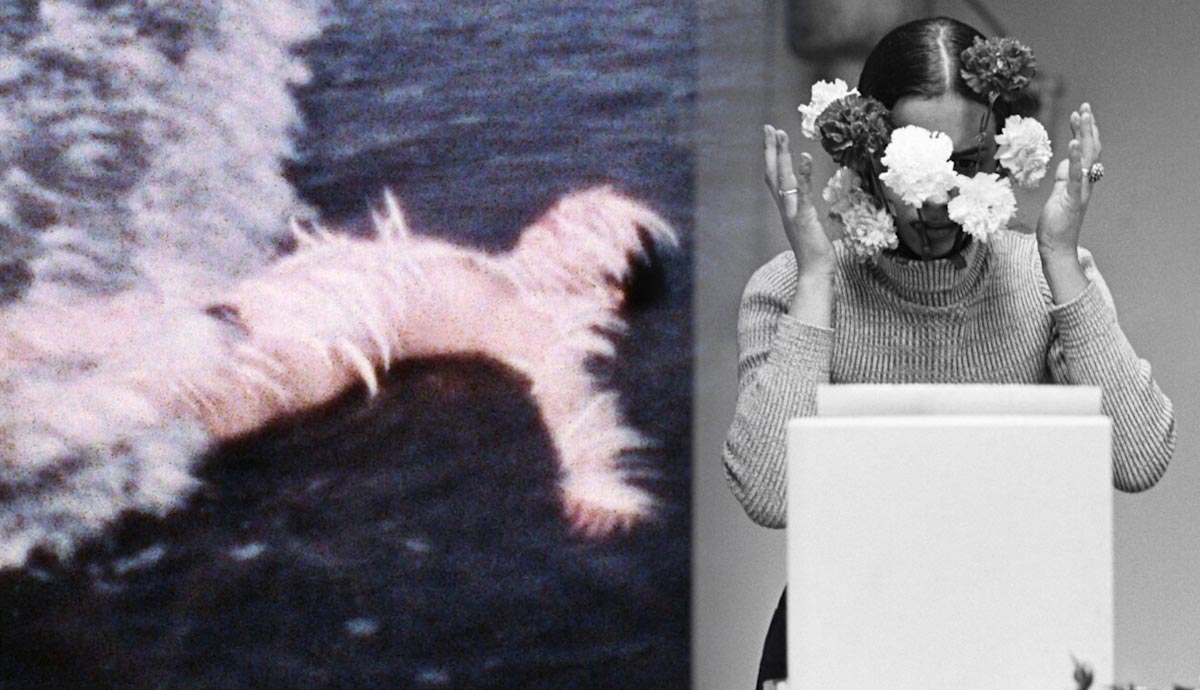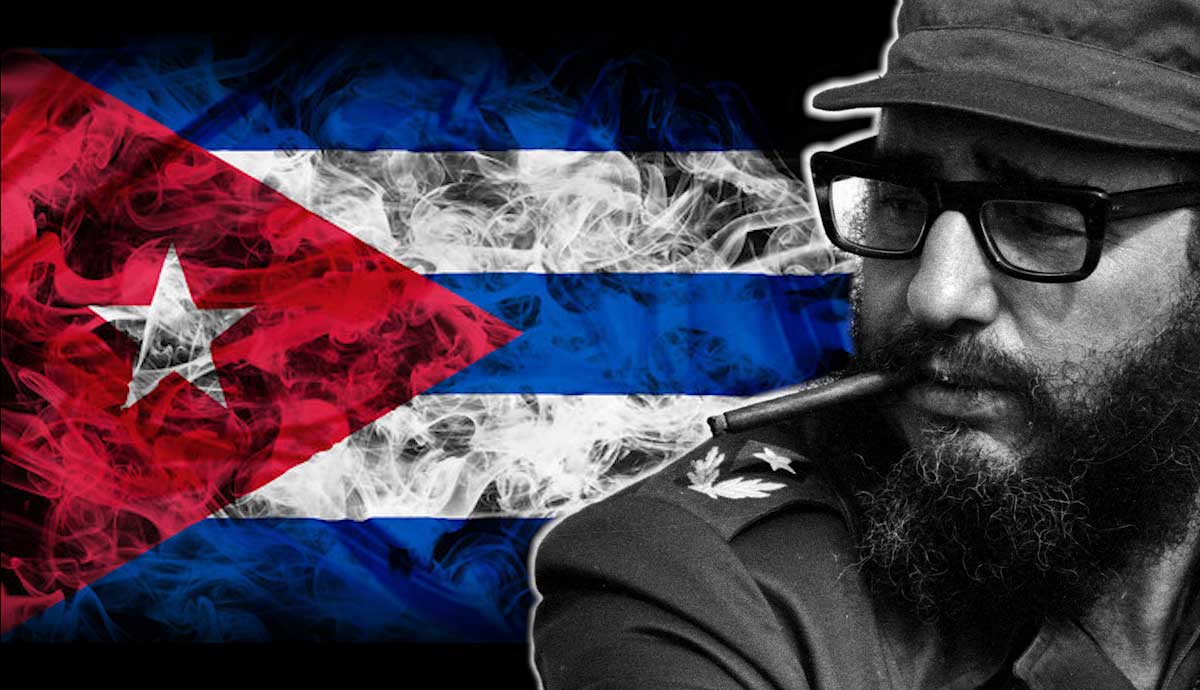
Ana Mendieta was a Cuban-American performance artist known for her images of human silhouettes. She incorporated body prints into natural scenery. Mendieta was raised in a Catholic family, but she nonetheless experienced the influence of polytheistic religious practices such as Santeria during her childhood. Growing up as an artist in the USA, she would bring together the ideas and beliefs of her native land and incorporate them in her reflective works on femininity, body image, and feelings of displacement.
Ana Mendieta and Displacement: Constructing Identity in a Cultural Chaos

The artist Ana Mendieta was born in Cuba in 1948, yet she had to flee to the US during the Cuban Revolution when she was just twelve years old. Her father was a political prisoner of the Castro regime, and the family had no other choice than to send Ana and her older sister away from the country alone. Mendieta lost contact with her family for years but managed to build a new life for herself in her new country.
As a displaced Cuban who lived most of her life in the USA, Mendieta turned out to be a double alien, perceived as an American stranger in her native culture and as a Latin American immigrant in her new home. As a performance artist, she regularly addressed her Cuban heritage and culture while relying primarily on the forces of nature and returning a human body to its original native space. Mendieta’s most famous body of work relates to her unique genre of the so-called earth-body paintings, ritualistic imprints of her body in mud, earth, snow, or grass. The marks left by Mendieta not only establish her connection to the natural realm but also highlight the impermanence of human presence as the grass grows back and rain washes away the traces. Here are some of the spiritual practices that had an effect on Mendieta’s artistic oeuvre.
1. Catholicism

Catholicism was a dominating spiritual force during the first decades of Ana Mendieta’s life. She was born and raised in a Catholic Cuban family and, after coming to Iowa, she lived in a Catholic orphanage run by nuns. Mendieta admitted that in her early artistic practice, she felt a connection to the Catholic doctrine but she soon started to identify with the indigenous practices of her land. Perhaps, her departure from Catholicism was an act of rebellion against its restrictive views on femininity and sexuality.
While Christianity greatly limits the opportunities for women to participate in rituals, many indigenous religions celebrate femininity and praise it. On the other hand, the Christian faith lying at the center of Western civilization had removed itself from the natural world in favor of social structures while religions like Santeria offer direct contact with natural phenomena, in its essence protesting the artificial man-made constructs of social order.
2. Santeria

One of the most important spiritual practices for Ana Mendieta was Santeria. Santeria, or Regla de Ocha, is a Cuban African religion that originated in the times of slavery. People from West Africa were brought to Cuba to work on tobacco and coffee plantations mostly belonged to the traditional religion Yoruba. However, the slave owners forcibly converted everyone to Catholicism and forbade other spiritual practices. Unwilling to give up their faith, the slaves decided to associate their deities called orichas with Christian saints and continue their worship in disguise.
Over the years, Santeria lost its secrecy since there was no pressing need for it and the practices and rituals remained widespread among Cubans. Each practitioner of Santeria has a specific oricha looking after them and influencing their decisions. Orichas also have distinctive sets of responsibilities that refer to particular aspects of human life and natural phenomena. To ask an oricha for help, Santeria practitioners perform ritual dances and songs and give offerings that include fruit, alcohol, animal sacrifice, and objects favored by a particular deity.

In the core of Santeria runs the belief in a certain universal energy that unites all elements of the universe. Mendieta shared this idea and tried to manipulate this energy in her works. She also associated herself with the oricha called Ochun—the deity of femininity, fertility, and divination responsible for rivers and streams. Her Catholisized avatar was the image of the Virgin Mary in the title of Our Lady of Charity, the patron saint of Cuba.
Santeria was a practice primarily widespread among the lower classes of Cubans. Ana Mendieta, the child from an affluent family, made contact with it through her parents’ servants and maids who told her stories about the orichas. She thought of these memories in the 1970s when her artistic practice gained momentum. Although Mendieta found her inspiration in Santeria rituals, she was never a follower.
Some Cuban practitioners of Santeria actually pinpointed her rather superficial understanding of it and lack of context. As a displaced Cuban, Mendieta had to interrupt her connection with her native culture abruptly, leaving behind bits and pieces of memory. These bits and pieces composed images of Cuba and Santeria with varying degrees of authenticity. Still, Mendieta’s resort to Santeria and its introduction to the American art scene could be read as an attempt to overcome displacement trauma by building a bridge between her lost home and found land.
3. The Great Goddess Archetype

One of the central elements of the feminist art of the 1970s and particularly of Mendieta’s oeuvre was the reflection on the so-called Great Goddess archetype. This archetype was a matriarchal celebration of natural cycles of birth and renewal through the prism of a female body. The Great Goddess is nature itself, imagined as a feminine figure. Some famous reflections of this archetype can be found in the prehistoric Venus of Willendorf statues or fertility goddesses in pre-Christian cults.
Mendieta’s body prints and silhouettes were the reflections of this archetype and acts of relating the existence of one particular woman with an omnipresent and powerful deity. In patriarchal structures built on the Abrahamic foundation, the act of reappropriating one’s body and making it valid through the so-called pagan or ‘savage’ religion was a powerful and radical rebellion. The worship of the divine feminine in its many forms was directly opposed to the process of shaming the followers’ bodies into obedience by proclaiming them inherently unholy and stained by the original sin. Instead of subjecting herself to the will of some kind of higher power, Mendieta directly associated with it, refusing the mediation of controlling authority figures.
4. Ancient Egypt

In the last years of her life, Ana Mendieta moved on from performance and film and started making tangible and material objects like sculptures. In 1983, she temporarily moved to Italy, where she started a radical new stage of her career. Her silhouettes, immovable yet fleeting for years, took tangible forms while also shedding away immediate relation to her own body. Her new figures were universal, distinctively anthropomorphic, yet devoid of categorizing traits.
Mendieta also started to experiment with materials and their origins. If her previous works mostly focused on her body as an instrument and a single specific location, Mendieta’s Italian period introduced a combination of materials imported from various significant locations, with sand imported from the Nile or Red Sea banks.
African culture, particularly its Egyptian part, was Mendieta’s great preoccupation in her final years. During her entire career, she focused on the concepts of life, death, and rebirth. She also reflected on these topics from the perspective of Ancient Egyptian burial practices. Her sculpted silhouettes of the time resembled mummified bodies, further developing the idea of a human being becoming one with the realm of nature and spirits.
Ana Mendieta’s Posthumous Reputation

Unfortunately, Ana Mendieta’s interpretation of indigenous religious practices and unconventional rituals harmed her reputation posthumously. In 1985, she fell from a window of her 34-floor apartment in New York. Most of Mendieta’s friends suspected that her husband, a famous Minimalist sculptor Carl Andre, murdered her. Andre was acquitted after a 1988 trial.
His lawyers did not have much evidence to back up his innocence directly but they relied on stereotypes and misunderstandings around Mendieta’s practice. The defense insisted her interest in non-conventional religion was a sign of emotional instability and mental illness. Moreover, during the trial, they invented a story of a Santeria deity that supposedly took flight on the night of Mendieta’s death, making her death look like a ritualistic suicide. Despite the absurdity of this claim, the case was closed, with the final verdict emphasizing Ana Mendieta’s supposed troubled mental condition.
Since the 1980s, the attitude toward indigenous religious practices has changed significantly. More and more artists prefer to address their local cultural codes and rituals instead of working in a universally recognized style. The practices of shamanism, reinterpretation of religious symbols, and combination of art with anthropology are becoming more widespread, thus diversifying the face of contemporary art.










